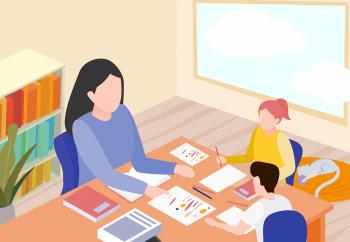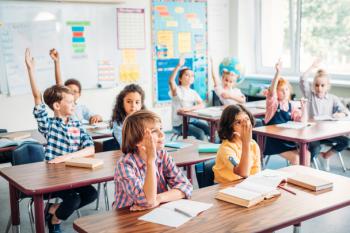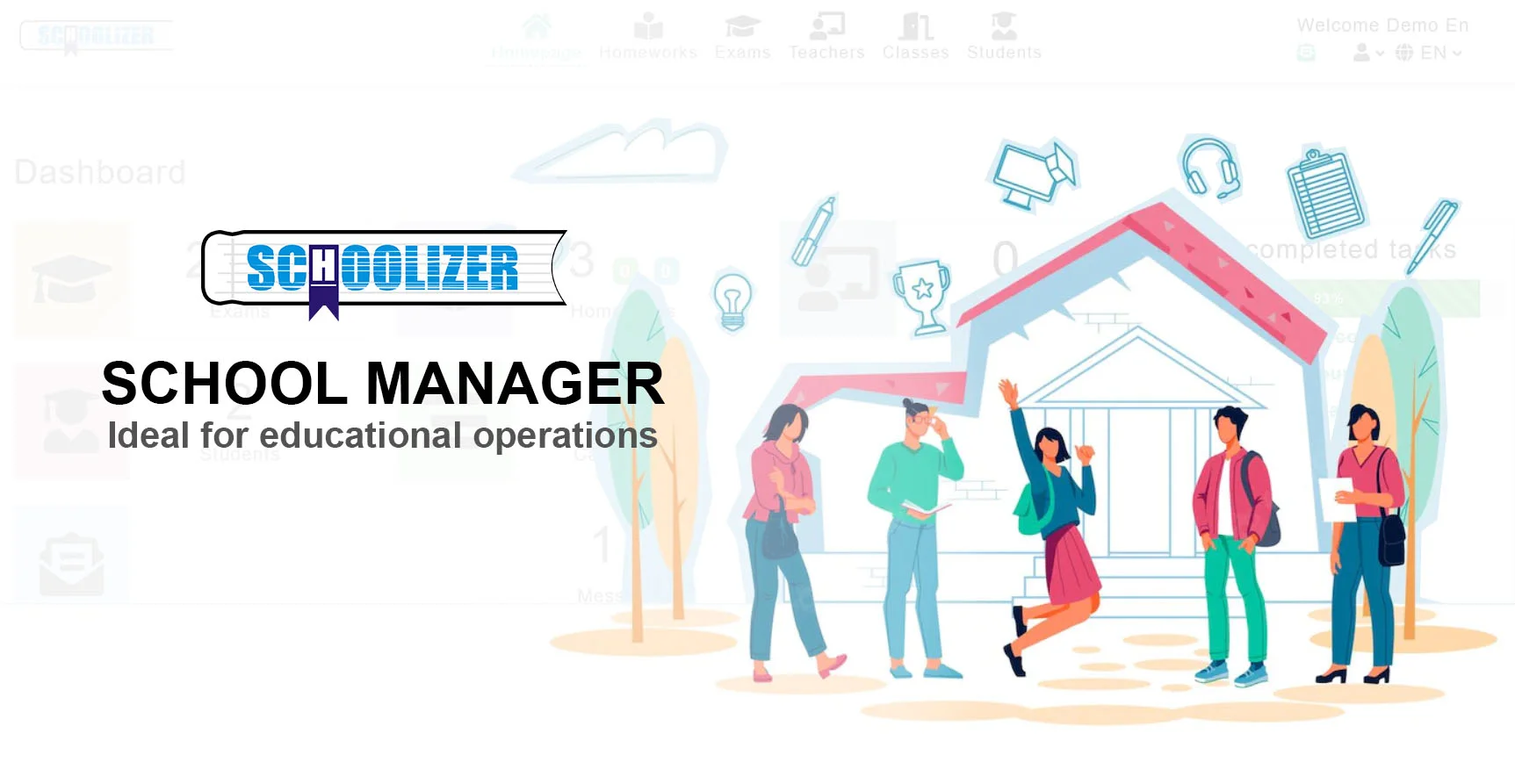Tips for Using Blended Learning in Classrooms

In the rapidly evolving landscape of education, the integration of technology has become increasingly prevalent, ushering in new approaches to teaching and learning. One such approach that has gained significant traction in recent years is blended learning.
Blended learning combines the best elements of traditional face-to-face instruction with online learning experiences, offering a dynamic and flexible approach to education.
In this blog post, we will explore the concept of blended learning, its benefits, and practical strategies for implementing it effectively in educational settings.
What is Blended Learning?
Blended learning is an educational approach that combines traditional face-to-face instruction with online learning activities. In a blended learning model, students engage in a mix of in-person classroom sessions and online learning experiences, often facilitated through digital platforms or resources.
Blended learning offers several advantages, including flexibility, personalized learning experiences, increased student engagement, and access to a wide range of learning resources.
It allows students to have some control over the pace, place, and path of their learning while still benefiting from face-to-face interactions with teachers and peers.
Read more: The Importance of Innovative Learning in Education
What are the Benefits of Blended Learning?
Blended learning offers a range of benefits for both students and educators. Some of the key advantages include:
- Flexibility: Blended learning provides flexibility in terms of time, pace, and location of learning. Students can access online resources and complete assignments at their own convenience, allowing them to accommodate other commitments or learning preferences.
- Personalized Learning: The combination of face-to-face instruction and online activities allows for more personalized learning experiences. Students can receive individualized support and access tailored resources based on their unique learning needs and preferences.
- Increased Engagement: Blended learning often incorporates interactive multimedia elements and digital tools that can enhance student engagement. Online activities, such as virtual simulations, quizzes, and discussion forums, can make learning more interactive and enjoyable.
- Access to Resources: Blended learning expands access to a wide range of learning resources, including multimedia materials, educational videos, and online libraries. Students can explore diverse content and perspectives beyond what may be available in traditional classroom settings.
- Promotion of Self-Regulated Learning: Blended learning encourages students to take more responsibility for their learning by providing opportunities for self-directed study and reflection. Students develop important skills such as time management, organization, and self-assessment.
- Immediate Feedback: Online assessments and quizzes can provide immediate feedback to students, allowing them to monitor their progress and identify areas for improvement in real-time. This timely feedback can enhance learning outcomes and facilitate continuous improvement.
- Cost-Effectiveness: Blended learning can be cost-effective for educational institutions by reducing the need for physical classroom space and resources. It also allows for the scalability of educational programs, reaching a larger number of students with fewer logistical constraints.
- Preparation for Digital Citizenship: In an increasingly digital world, blended learning helps students develop digital literacy skills and prepares them for success in the digital workforce. Students learn to navigate online platforms, critically evaluate digital content, and collaborate effectively in virtual environments.

Read more: What is Deep Learning? The Top Teaching Strategies for Teachers
The Best Tips for Using Blended Learning in Classrooms
Implementing blended learning in classrooms requires careful planning and execution. Here are some tips to effectively integrate blended learning into your teaching practice:
- Set Clear Learning Objectives: Clearly define the learning goals and objectives for your blended learning activities. Identify the knowledge and skills that students should acquire through both face-to-face and online components of the course.
- Choose Appropriate Technologies: Select digital tools and platforms that align with your learning objectives and cater to the needs of your students. Consider factors such as ease of use, accessibility, and compatibility with existing classroom resources.
- Provide Adequate Training: Offer training and support to both students and educators on how to use the technology effectively. Ensure that everyone is comfortable navigating online platforms, accessing resources, and participating in virtual activities.
- Blend Activities Thoughtfully: Integrate online and offline activities in a way that enhances learning and engagement. Use face-to-face sessions for interactive discussions, group activities, and hands-on exercises, while leveraging online resources for content delivery, self-paced learning, and collaborative projects.
- Encourage Active Participation: Foster active participation and collaboration among students both in the physical classroom and online. Incorporate opportunities for peer interaction, group work, and discussion forums to facilitate meaningful learning experiences.
- Provide Timely Feedback: Offer timely feedback on student progress and performance, both in-person and online. Use digital tools for formative assessment, quizzes, and online discussions to provide immediate feedback and support student learning.
- Monitor Student Progress: Regularly monitor student engagement and progress in both face-to-face and online activities. Use data analytics and learning management systems to track student participation, completion rates, and performance on assessments.
Read more: What is Active Learning? The Best Guide for Active Learning in 2024
Needed Skills to Improve Blended Learning
Improving blended learning requires a combination of pedagogical expertise, technological proficiency, and effective instructional strategies. Here are some key skills that educators can develop to enhance their practice of blended learning:
1- Pedagogical Skills
- Curriculum Design: Ability to design and sequence learning activities that integrate face-to-face and online components effectively.
- Assessment and Feedback: Skill in designing formative and summative assessments for both in-person and online activities, and providing timely feedback to students.
- Differentiation: Skill in adapting instruction to meet the diverse needs, interests, and learning styles of students.
- Active Learning Strategies: Skill in facilitating interactive and collaborative learning experiences that engage students in meaningful ways.
- Reflection and Iteration: Ability to reflect on teaching practices, analyze student learning data, and make adjustments to improve instructional effectiveness.
2- Technological Skills
- Digital Literacy: Competency in using digital tools, software applications, and online platforms for instructional purposes.
- Learning Management Systems (LMS): Familiarity with LMS platforms for managing course content, facilitating communication, and tracking student progress.
- Multimedia Production: Ability to create and integrate multimedia resources such as videos, presentations, and interactive simulations into blended learning activities.
- Online Collaboration Tools: Proficiency in using collaborative tools such as discussion forums, wikis, and virtual whiteboards to support student collaboration and communication.
- Data Analysis: Skill in analyzing student data and learning analytics to inform instructional decision-making and improve learning outcomes.
3- Instructional Strategies
- Flipped Classroom: Ability to implement the flipped classroom model, where students engage with instructional content online prior to in-person class sessions.
- Project-Based Learning: Skill in designing and facilitating project-based learning experiences that integrate online research, collaboration, and presentation skills.
- Problem-Based Learning: Ability to design authentic, real-world problems for students to solve collaboratively using online resources and tools.
- Peer Instruction: Skill in implementing peer instruction techniques, such as peer teaching, peer assessment, and peer feedback, to enhance learning outcomes.
- Gamification and Game-Based Learning: Knowledge of gamification principles and game-based learning strategies to increase student motivation and engagement.
4- Communication and Collaboration Skills
- Online Facilitation: Ability to facilitate online discussions, group activities, and virtual collaborations effectively.
- Feedback and Support: Skill in providing timely and constructive feedback to students through online communication channels.
- Community Building: Ability to foster a sense of community and belonging among students in both online and face-to-face environments.
- Parent and Stakeholder Engagement: Skill in communicating with parents and stakeholders to keep them informed and involved in the blended learning process.

Read more: The Top International Accredited Certificates for Chemistry Teachers
To Conclude
As we conclude our exploration of blended learning, it is evident that this innovative approach has the potential to revolutionize education in profound ways. By leveraging the power of technology to enhance traditional teaching methods, blended learning offers a pathway to more personalized, engaging, and effective learning experiences for students.
As educators continue to embrace and refine the practice of blended learning with Schoolizer, they are poised to empower learners to thrive in the digital age and beyond.






